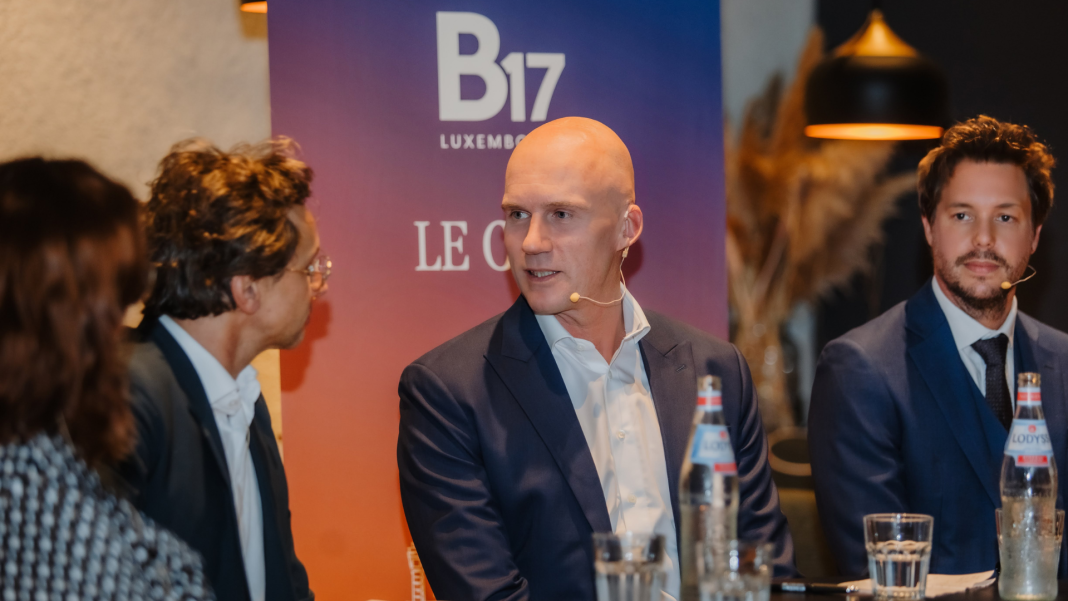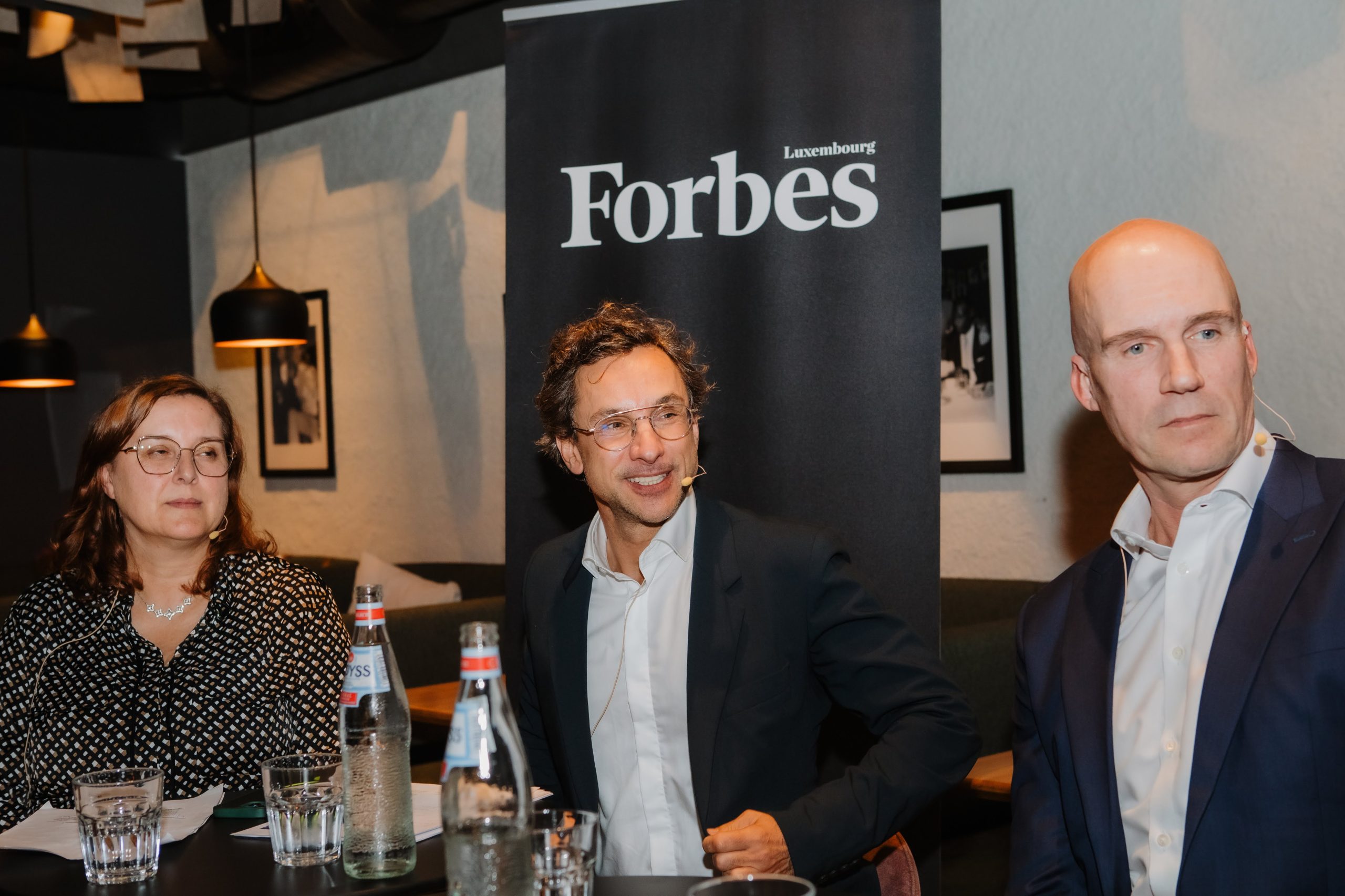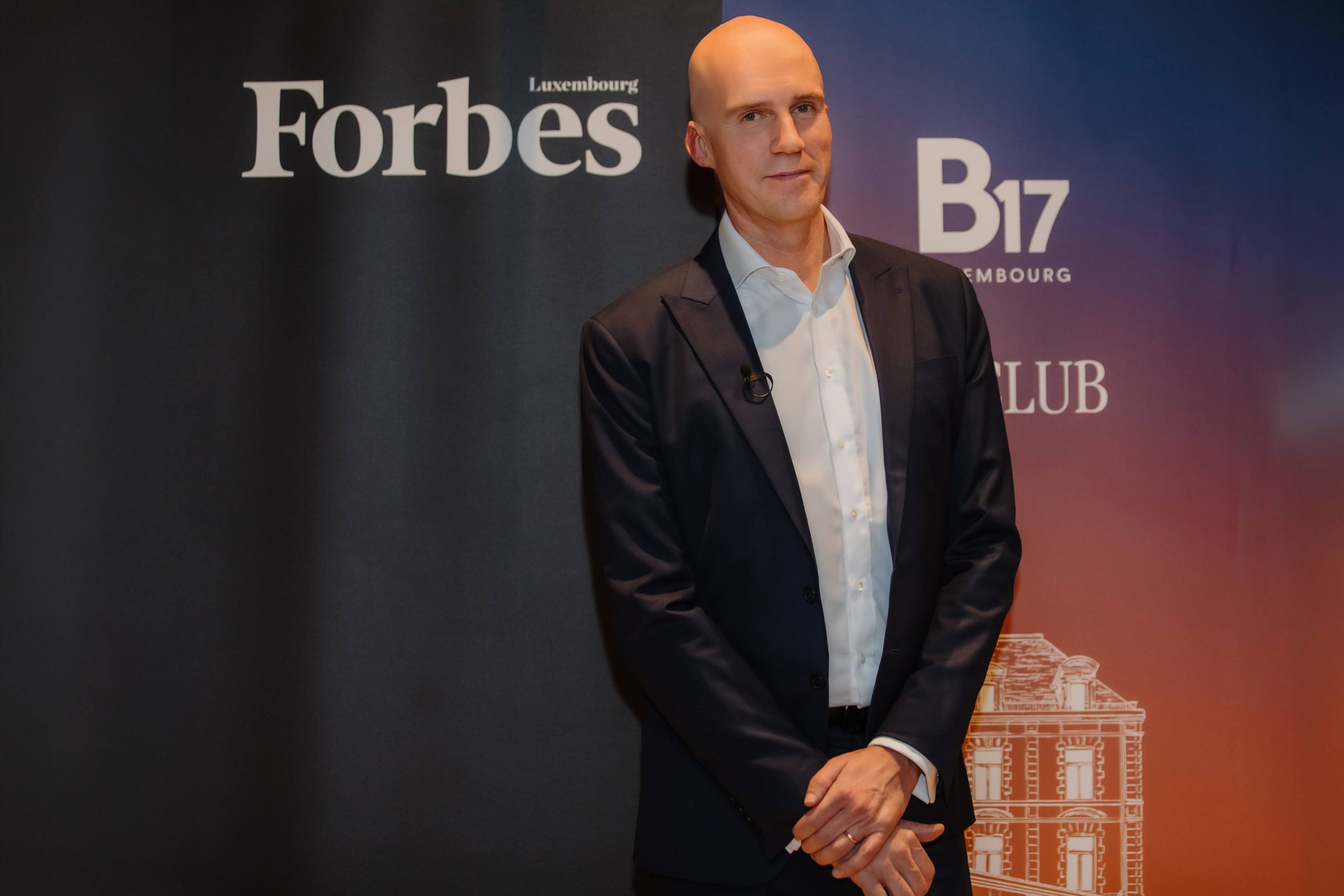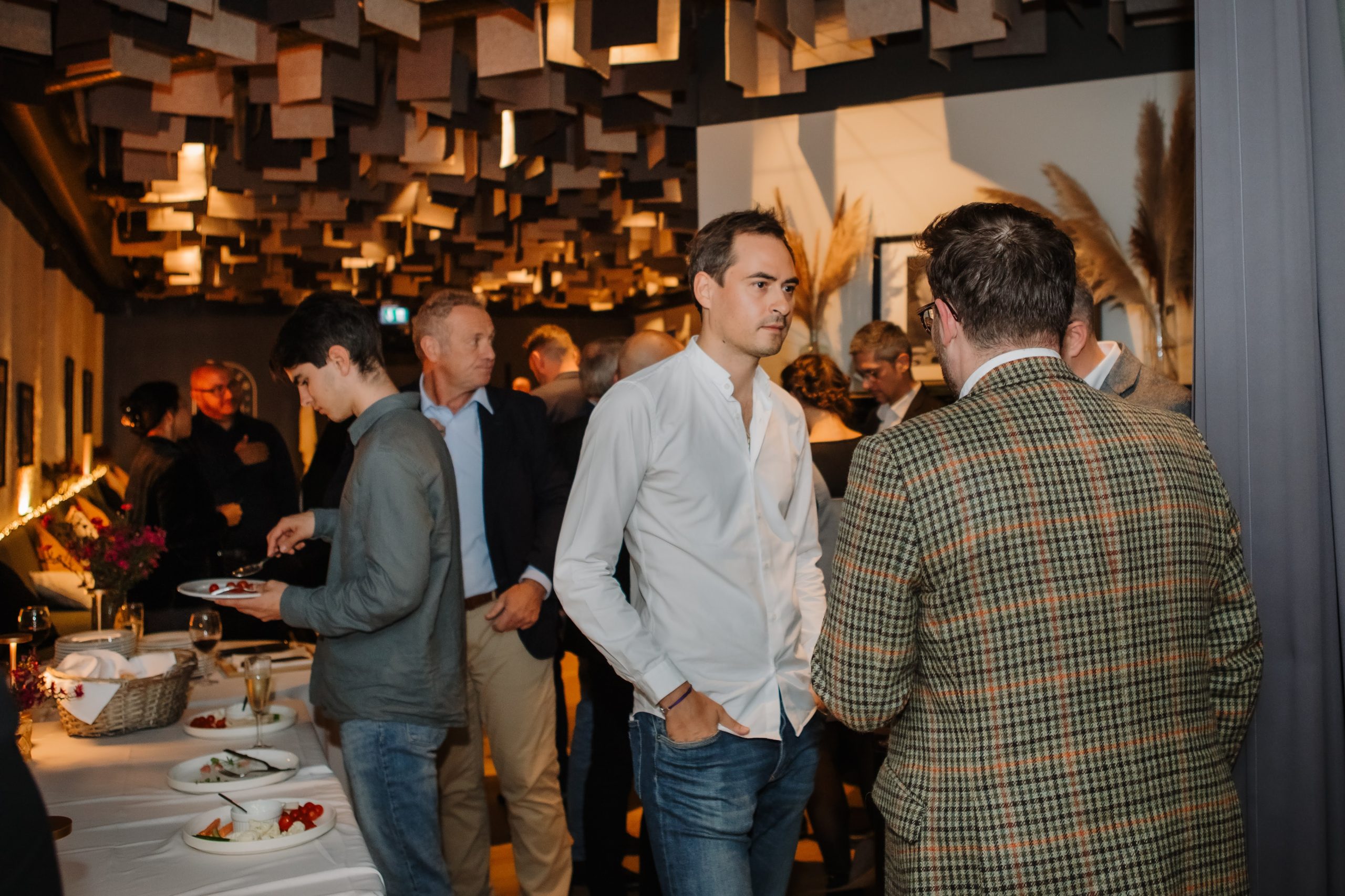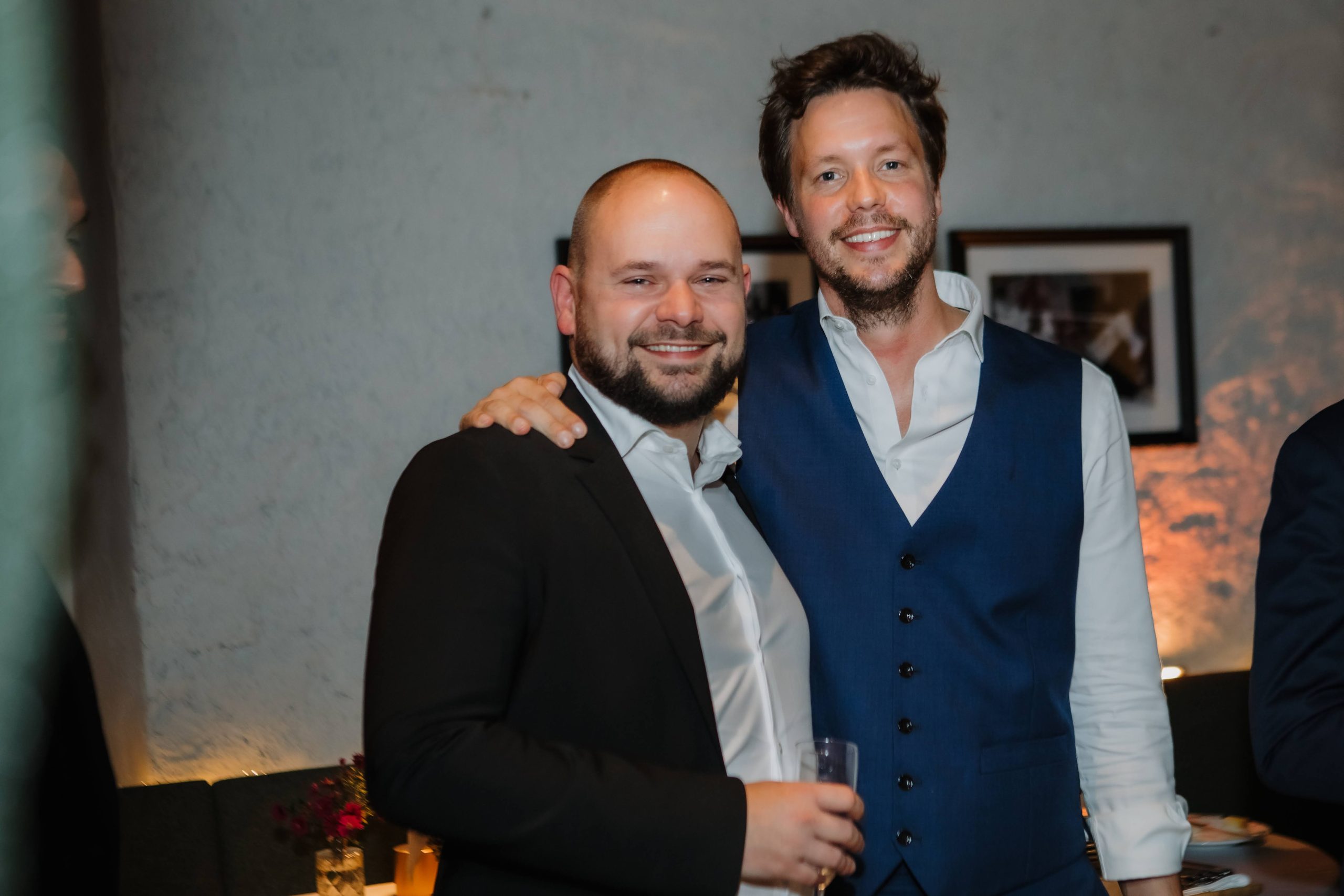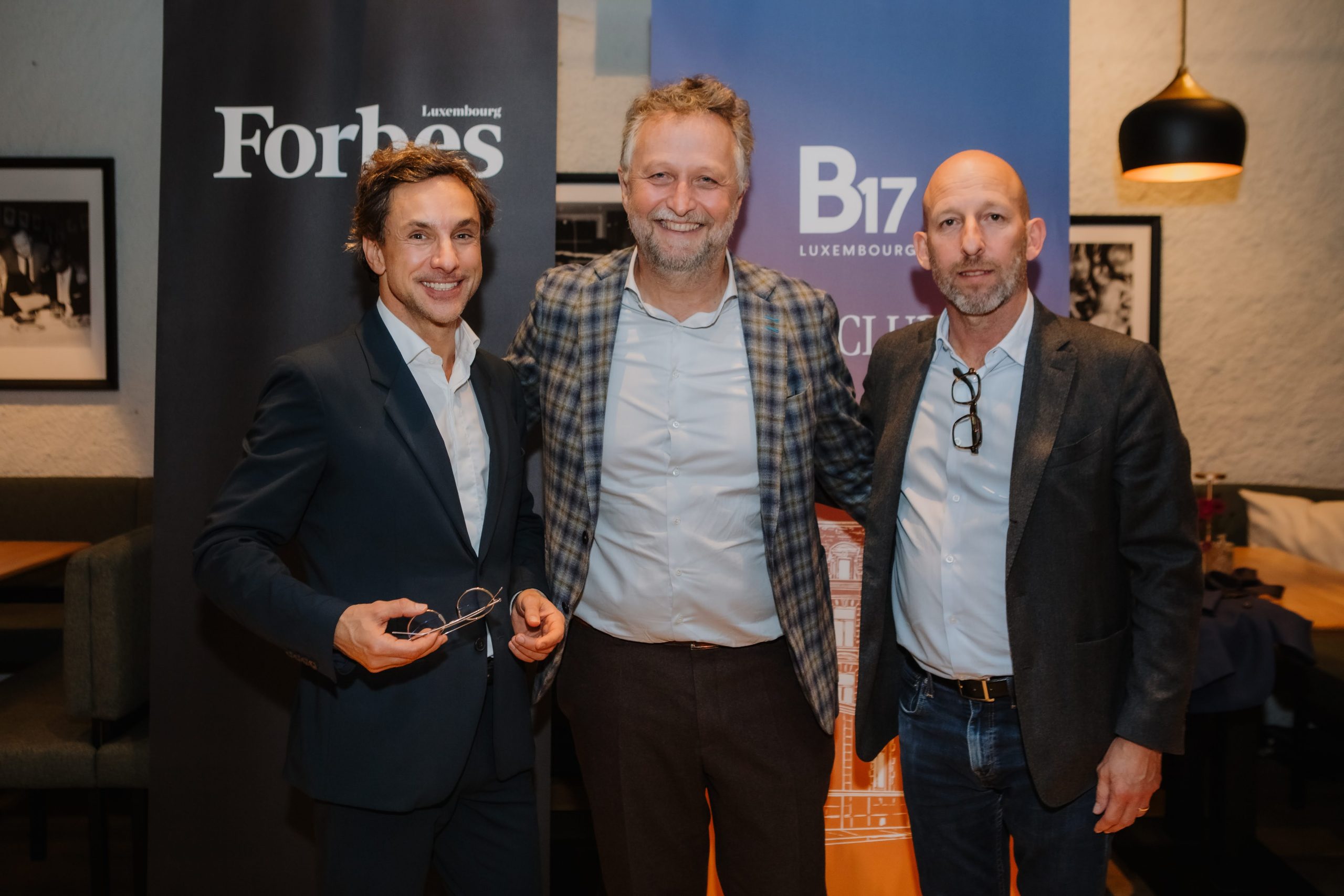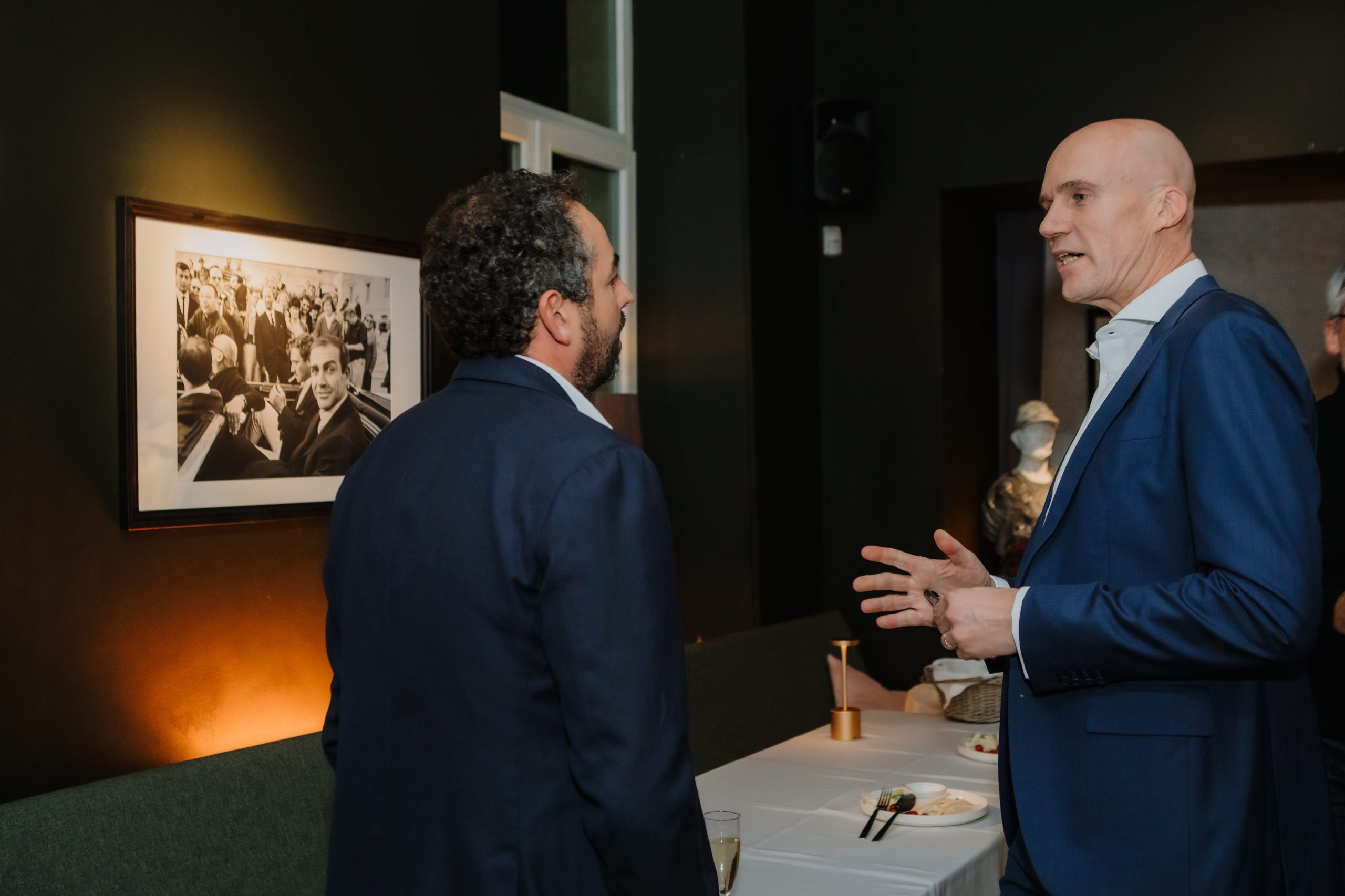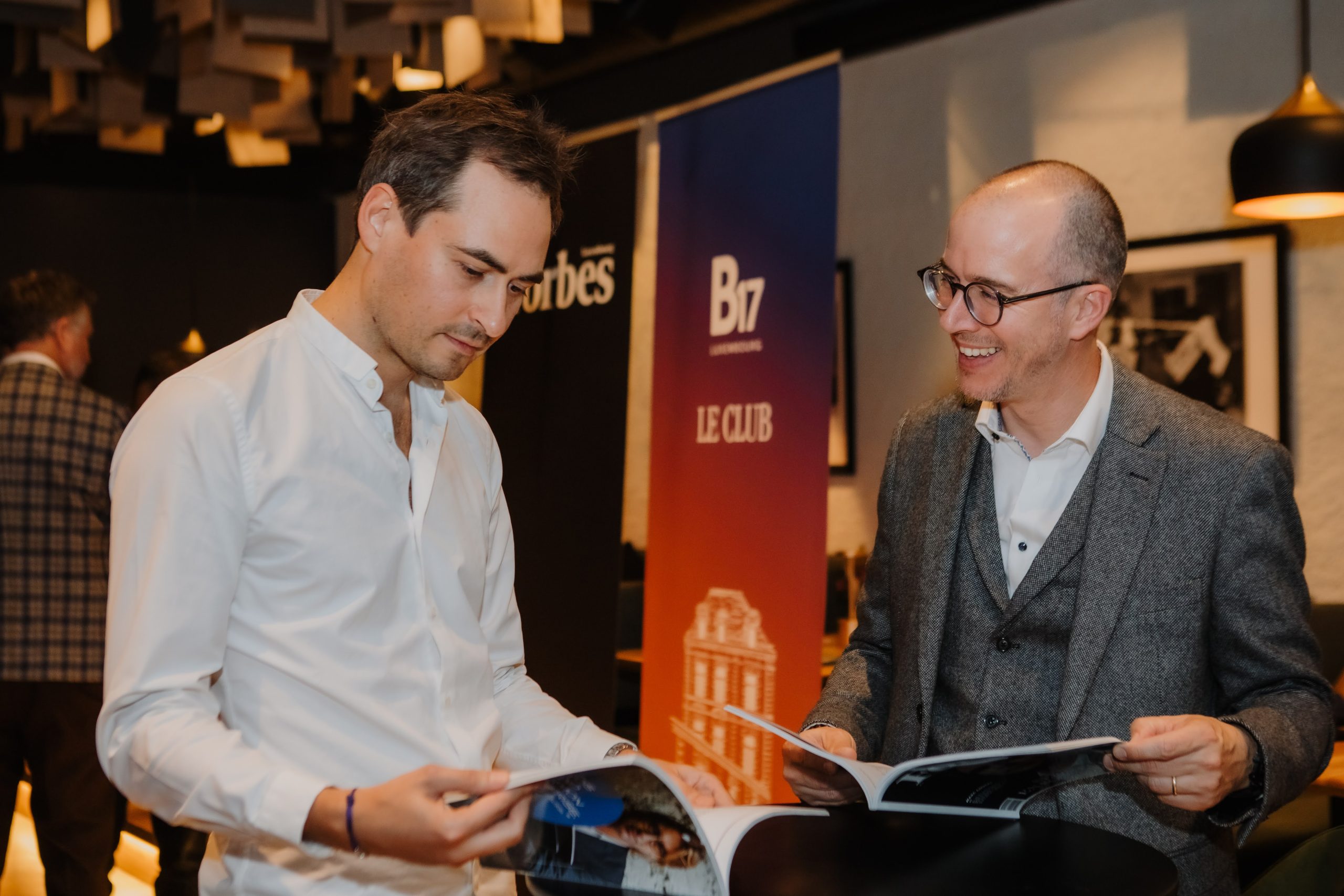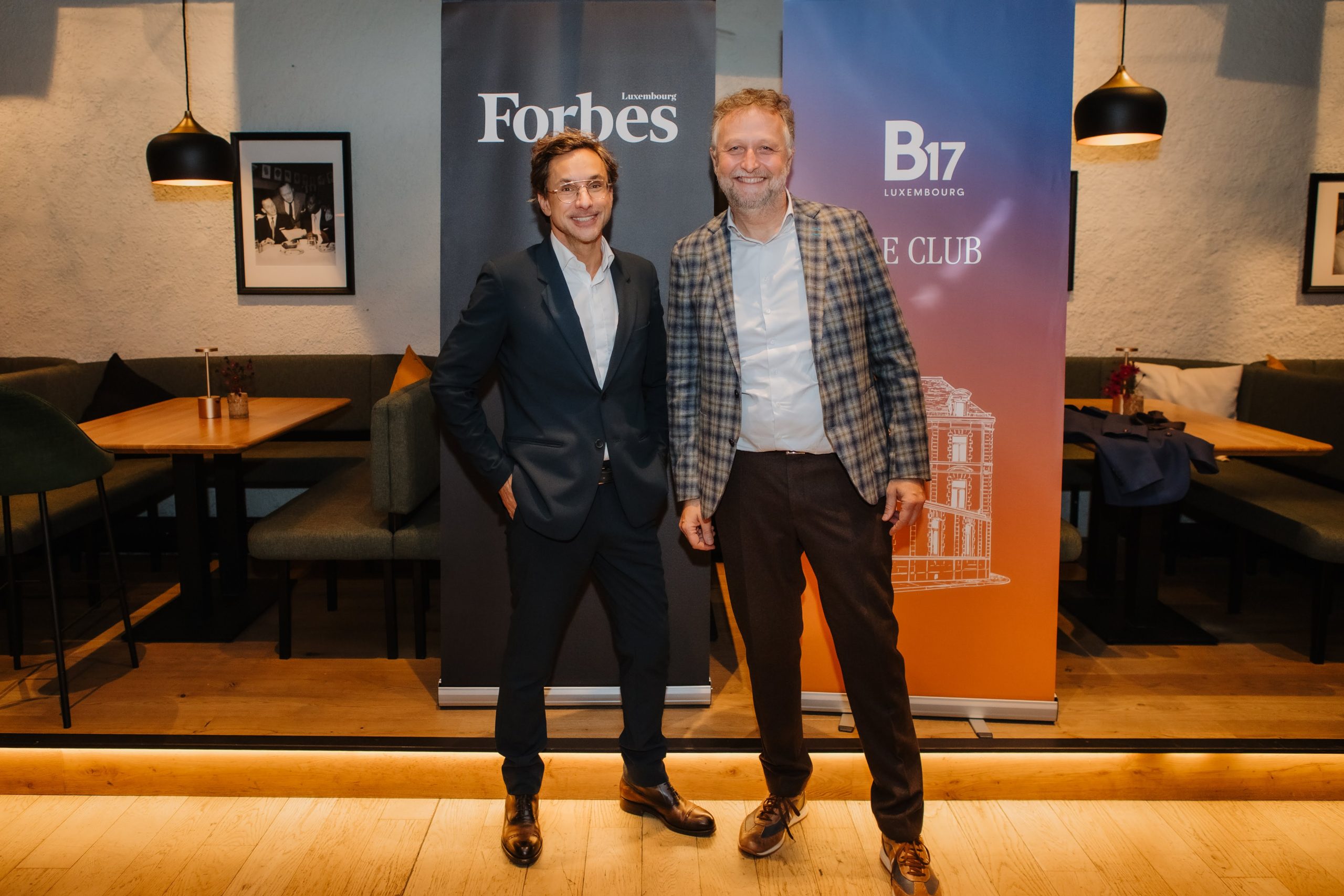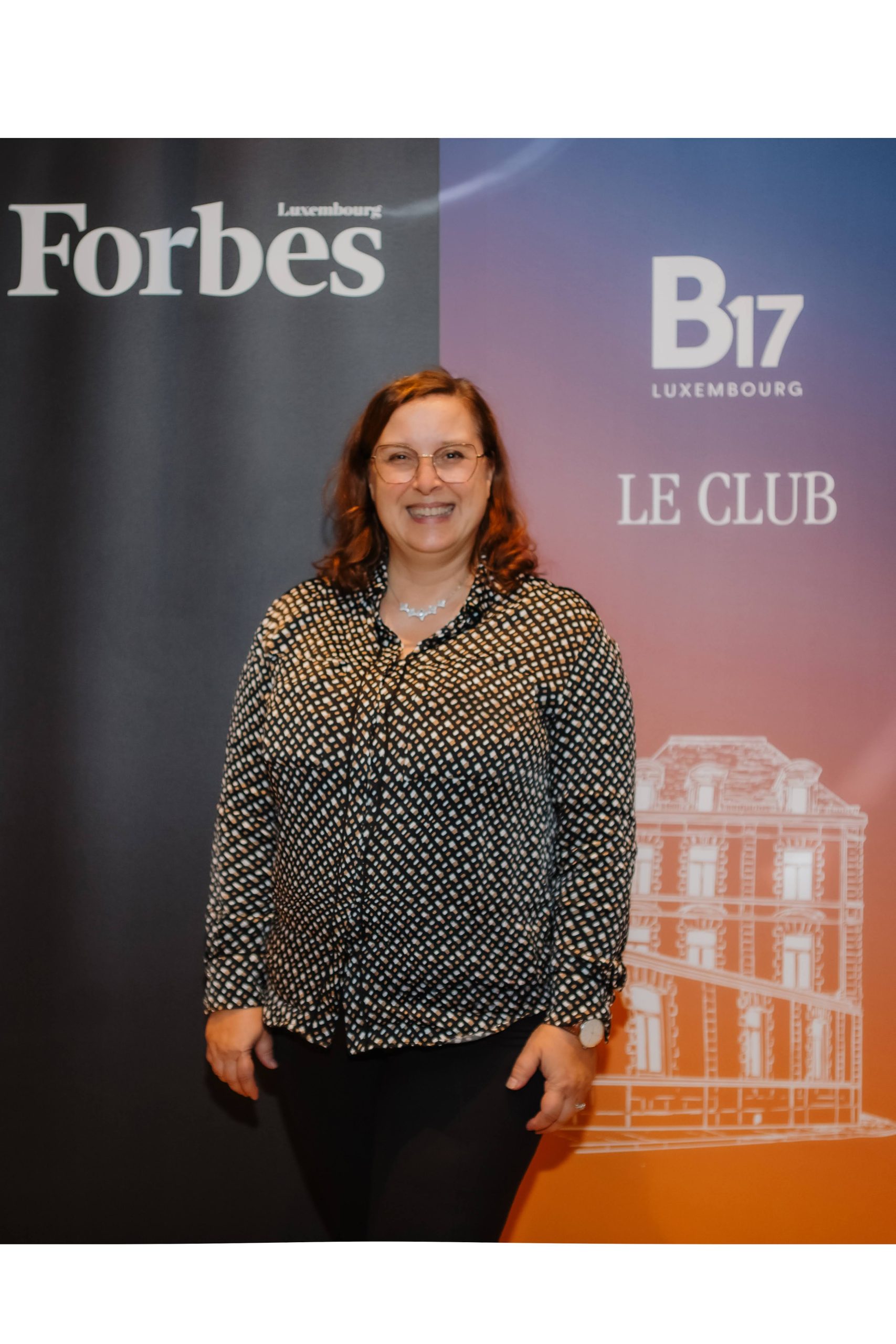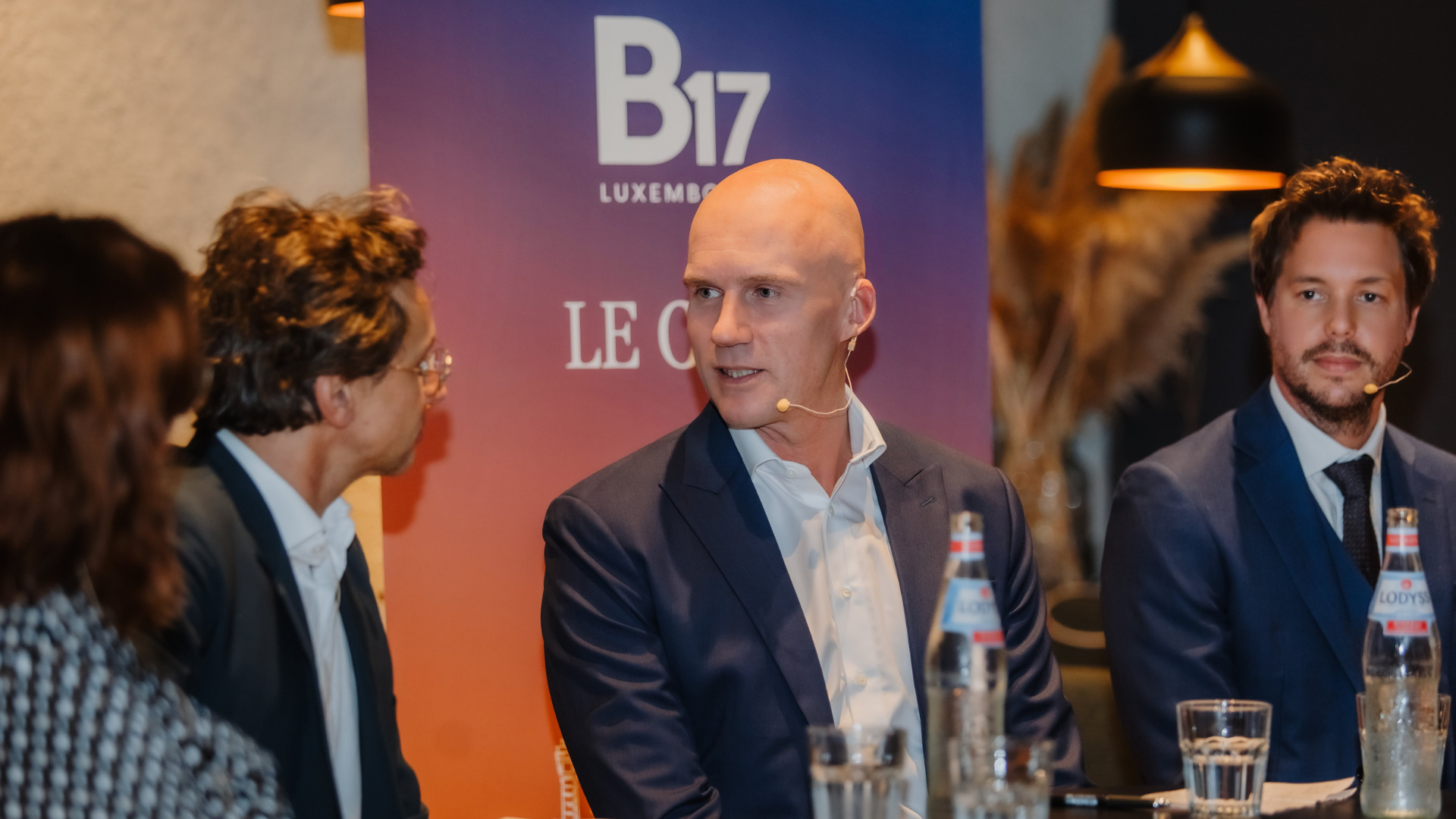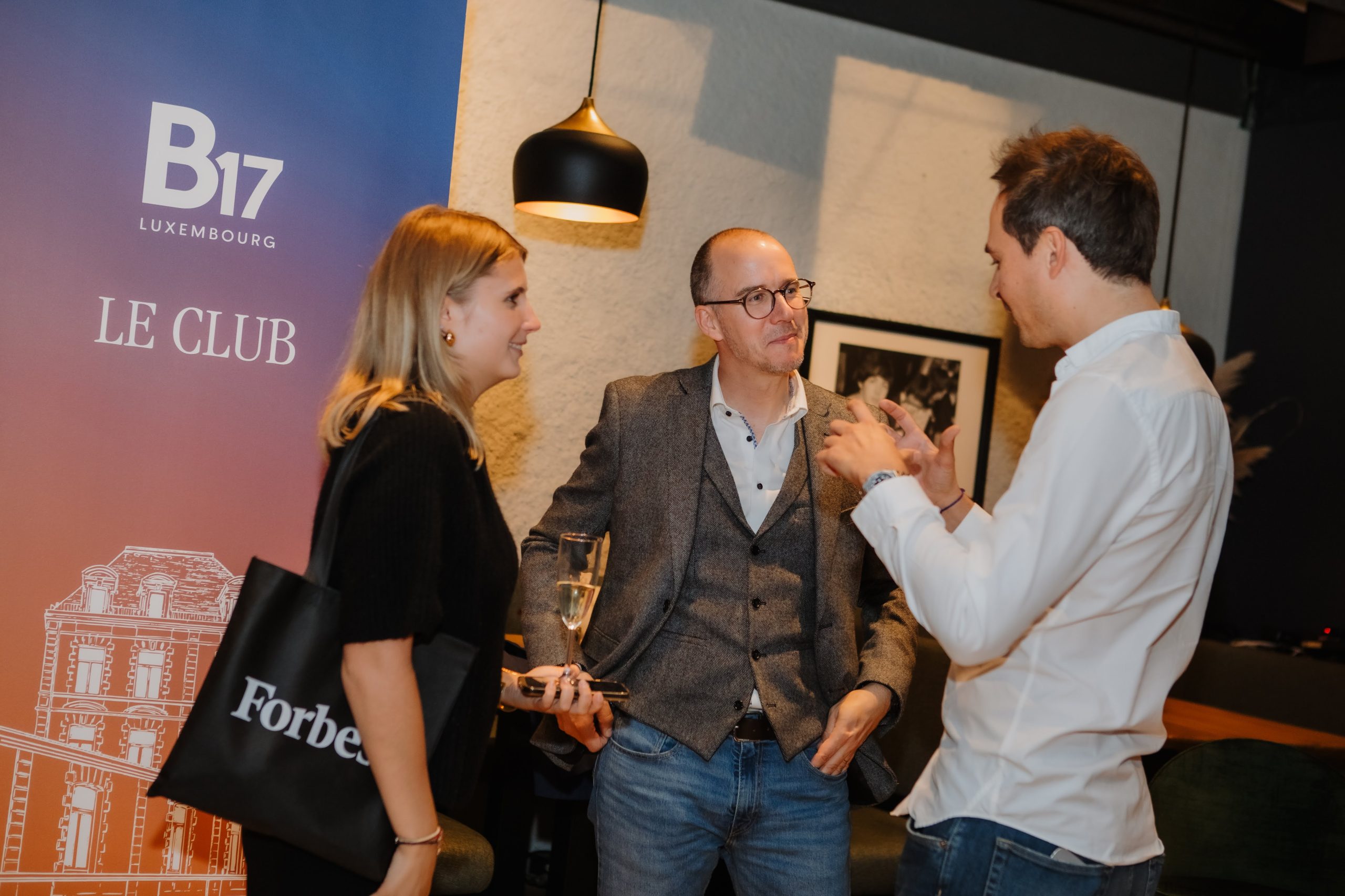On 7 October, B17 and Forbes Luxembourg gathered an audience of industry insiders at Tero House 17 for an intense and candid discussion on digital finance, crypto and tokenisation.
Moderated by Pierre-Yves Lanneau Saint Léger, CEO of Forbes Luxembourg, the event stood out for the quality of its exchanges and the active participation of the audience, which included investors, entrepreneurs and finance professionals. Far from being a simple talk, the evening took the form of a multi-voiced debate in which the audience played an integral role.
Panellists Xavier Buck, co-founder and Chairman of EuroDNS and Independent Director of 6Monks; Bénédicte Keith, CEO of SnapSwap International (Wallee Group); and Maître Harry Lars Ghillemyn, lawyer and co-founder of the House of Web3 Luxembourg, explored the challenges of an industry that is no longer new, yet now entering a decisive phase of structuring. It was a night of strategic reflection on the future of a sector Luxembourg has supported for over a decade.
A Pivotal Moment for the Market
The discussion naturally began with a number: on Sunday 5 October, Bitcoin surpassed the symbolic threshold of $125,000, a milestone for an asset whose perception has profoundly evolved.
While panellists’ opinions diverged on certain points, they agreed on one thing: crypto is no longer a speculative niche. Quite the opposite: it has entered a phase of institutional consolidation. After years of being governed primarily by national laws, the sector is now supported by the implementation of the European MiCA (Markets in Crypto-Assets Regulation) and growing interest from institutional investors.
“We are at a pivotal moment,” said Xavier Buck. “Major banks no longer have a choice: investors want crypto products, the technology is ready. Luxembourg cannot afford to lag behind.” This transformation, he said, is not a passing trend but signals the end of the “Wild West” era and the entry of crypto into the regulated economy. “Professional players are now seeking robust infrastructure, custody mechanisms and compliance processes capable of reassuring investors.”
From Speculation to Structuring
Buck’s parallel between crypto and the rise of the Internet in the early 2000s resonated throughout the room. Just as the web became institutionalised at the dawn of the 21st century, so too is crypto today.
6Monks, where Buck serves as Independent Director, is the first regulated AIFM in Luxembourg authorised to manage digital asset funds on a white-label basis — a concrete illustration of this transformation. Alternative funds and discretionary mandates now integrate crypto strategies within a fully compliant European legal framework.
Tokenisation, Buck continued, “no longer concerns only cryptocurrencies: it will extend across all sectors, including finance, real estate, art, luxury, because it makes assets more liquid, traceable and accessible.” All three panellists agreed that this evolution signals a new reality: Web3 has become a pillar of international finance.
A European Regulatory Framework as a Competitive Edge
The advent of MiCA, CASP and VASP regulations further support adoption by creating specific measures for digital assets, which complement and specialise the existing framework. In short, it means that European regulation, once seen as a constraint, is now emerging as a competitive advantage. “What is at stake,” Harry Lars Ghillemyn explained, “is the technology’s ability to ensure traceability, transparency and immutability of transactions. European regulation has managed to recognise these advantages while containing potential excesses.”
He identified three main categories of tokens:
- tokenised financial instruments, already covered by the MiFID Directive and the Prospectus Regulation, which also govern traditional financial instruments. These may include companies like Bitflyer and Bitstamp which have been regulated as payment institutions;
- utility tokens, linked to specific uses or services;
- and stablecoins, now regulated under MiCA, which distinguishes between asset-referenced tokens (ARTs) and e-money tokens (EMTs), depending on whether they are backed by a basket of assets or a single currency.
This clarity allows financial institutions to operate confidently, without legal uncertainty. “Regulation is not a barrier to innovation,” he added. “It is a condition of its sustainability.”
In Luxembourg, where the CSSF maintains ongoing dialogue with industry players, this logic is fully embodied: a regulated market open to experimentation. The day of the event, the Luxembourg finance ministry announced a sovereign fund partially issued on blockchain, reinforcing Luxembourg’s image as a proactive financial centre. “Luxembourg doesn’t wait for regulations to be imposed,” observed Ghillemyn. “It anticipates them and implements them within a coherent framework.” In short, regulation has given crypto the credibility it long lacked.
Education: The Key to Trust
While market structuring is accelerating, Bénédicte Keith reminded the audience that the challenge is not merely technical. “Even as the market becomes more organised, it remains complex. That is why private investors need guidance. Today, regulated actors exist who can manage these assets and ensure compliance.”
She emphasised the importance of investor education — both private and institutional — through accredited intermediaries. “The United States is moving fast, sometimes too fast. Europe is moving slowly but solidly. In the long term, that solidity will be the foundation of trust.”
In this context, Karima Lachgar, CEO of Olky Wallet, offered a concrete perspective, as she is currently navigating the regulatory process herself. “This process compels us to be rigorous on every front — compliance, transparency, governance. It is not a hindrance; it is a discipline that structures the market.”
Her comment was warmly received, as it reflected a broader cultural shift: Web3 actors no longer see regulation and innovation as opposites, but as inseparable partners.
Luxembourg: A Real-World Laboratory
All speakers highlighted Luxembourg’s pioneering role in the regulated adoption of financial technologies. “Ten years ahead of the others, the country understood the potential of blockchain,” noted Xavier Buck. “Now, it is the European Union that is following this trajectory.”
This leadership stems from a rare combination: a strong financial culture, an accessible regulator, and a capacity to integrate new technologies without disrupting the existing framework. As such, Luxembourg has positioned itself as Europe’s living laboratory for digital finance, where public and private players jointly test the practical implementation of European regulations.
Towards Integrated Finance
The panellists agreed on one final point: crypto will not remain a standalone asset class. “Crypto products will become a natural component of asset management,” predicted Xavier Buck. “Just as the Internet eventually became part of everyday life, digital assets will integrate seamlessly into traditional portfolios.”
For Harry Lars Ghillemyn, the success of this integration will depend on alignment between technology, governance and law. “Innovation only makes sense if it comes with clear rules. That’s what will allow the market to shift from a speculative logic to one of value creation.”
A Confident Leadership
As the discussion drew to a close, one conviction emerged clearly: Luxembourg now offers a model of balance between regulation and innovation. By anticipating legislative developments, supporting market players and fostering constant dialogue between institutions and entrepreneurs, the Grand Duchy continues to consolidate its position as Europe’s hub for digital finance.
“What we’re witnessing today is a convergence between technology, regulation and the market,” summarised Pierre-Yves Lanneau Saint Léger. “And Luxembourg has managed to approach it with pragmatism.”
Enjoy the slideshow:
Read the articles:
Luxembourg’s Crypto Funds Surge: How Europe’s Finance Hub Is Embracing Digital Assets
EU Omnibus Package 2025: ESG Reporting In Transition
Driven By Passion: Inside Luxembourg’s Thriving Classic Car Scene

